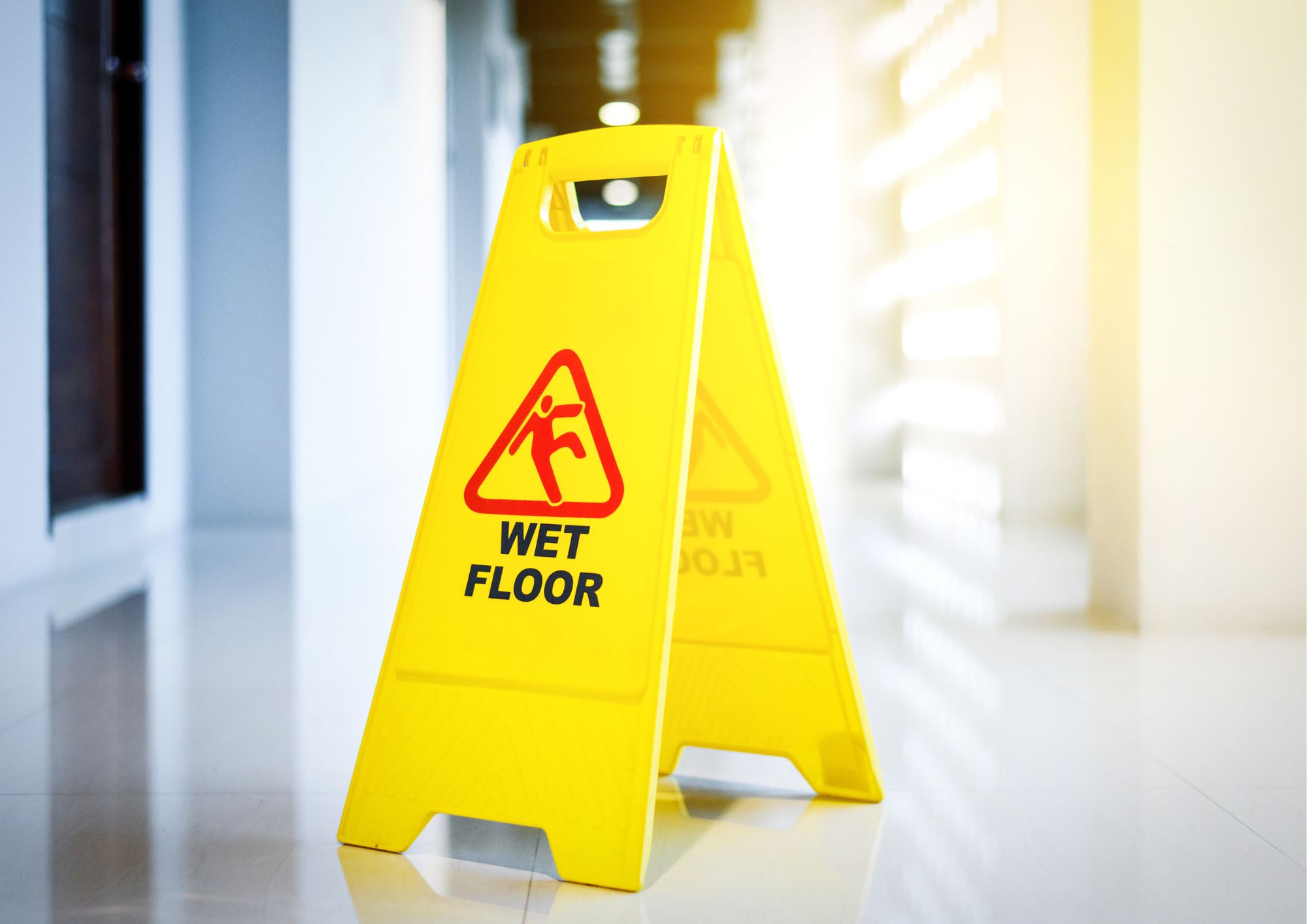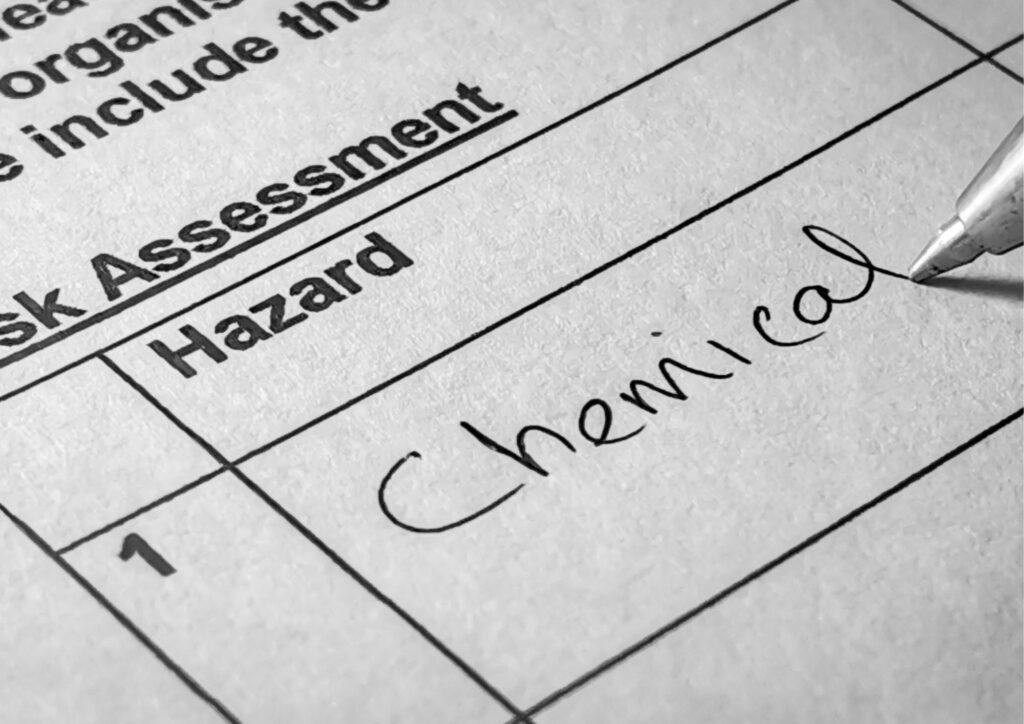Most Common Workplace Accidents & How to Avoid Them

As much as we try to avoid them, accidents at work do happen. Some workplaces may have more risks than others, for example construction sites, but there are plenty of examples of accidents at work that show they can happen anywhere.
Accidents at work can result in minor injuries or serious, life-changing ones. It is of course important to know what to do if an accident occurs in the workplace, but first and foremost we should look to minimise the chance of them happening at all through thorough health and safety audits and preventative methods.
In this article, we talk about:
- The most common types of accidents in the workplace
- How to avoid accidents at work
- Reporting workplace accidents
- Getting ahead of workplace health and safety
The Most Common Types Of Accidents In The Workplace
According to the Health And Safety Executive (HSE), 604,000 workers in the UK reported that they had sustained non-fatal workplace injuries in 2023/2024 leading to a huge 4.1 million working days lost.
Based on data compiled by the HSE on self-reported injuries, the below table summarises the most common types of accidents that occurred in the workplace on average during the 3 year period of 2021/2022 – 2023/2024.

| Ranking | Type of Accident | Averaged Estimated Incidence |
| 1 | Other kinds of accident | 138,000 |
| 2 | Slipped, tripped or fell on the same level | 124,000 |
| 3 | Injured while handling, lifting or carrying | 115,000 |
| 4 | Physically assaulted by a person | 49,000 |
| 5 | Hit by moving, flying, falling object | 41,000 |
| 6 | Contact with moving machinery | 38,000 |
| 7 | Fell from a height | 28,000 |
| 8 | Injured by an animal | 21,000 |
| 9 | Hit something fixed or stationary | 19,000 |
| 10 | Trapped by something collapsing or overturning | -1000 |
Table Source: Labour Force Survey, HSE
1. Other Kinds Of Accident
Average estimated incidence: 138,000
The most common form of accident reported in the workplace falls under ‘Other kinds of accident’. This broad category could include any injury that is more specific and doesn’t fall into common categories, including but not limited to:
- Exposure to harmful substances or environments
- Electrical injuries
- Fire and explosions
2. Slips, Trip And Falls
Average estimated incidence: 124,000
Slips, trips and falls can happen anywhere, be it in a busy restaurant or even working from home. Slips could be minor bumps in an office or more severe falls from heights on a construction site. Making sure that walkways are clear and free of any obstructions and ensuring hazards like wet floors are clearly marked up can help to avoid anyone in the workplace suffering a slip, trip or fall, no matter how minor.
3. Handling, Lifting, Or Carrying Injuries
Average estimated incidence: 115,000
Injuries sustained from handling, lifting, or carrying objects are among the most prevalent workplace accidents, consistently ranking high in non-fatal injury statistics from the HSE. These accidents are often referred to as ‘manual handling’ incidents, and cover everything from sprains and strains to longer term musculoskeletal issues. These injuries are often caused through a lack of health and safety training, leading to workers lifting objects incorrectly, or failing to utilise mechanical aids when available.
4. Physical Assault
Average estimated incidence: 49,000
Workplace violence, encompassing physical assaults, threats, and verbal abuse, is a serious concern that can lead to significant physical and psychological harm. Injuries from physical assault can range from minor bruising and scratches to severe cuts, fractures, and even more serious, life-threatening trauma. Preventing these incidents requires a proactive approach, including comprehensive risk assessments to identify vulnerable areas.
5. Hit By Moving, Flying, Or Falling Objects
Average estimated incidence: 41,000
Being hit by falling, flying, or moving objects accounts for a significant percentage of accidents reported in the workplace. These injuries commonly occur in manufacturing facilities and warehouses, but they can happen at any workplace. Usual causes are incorrect or unsafe storage, malfunctioning machinery, and unsecure loads.
6. Contact By Moving Machinery
Average estimated incidence: 38,000
Machinery related accidents at work happen most often in factories and warehouses where machines, including forklifts and pallet trucks, are used daily. Even with proper training and well-maintained machinery, accidents can happen. This can be down to user error or problems in the environment, such as obstructions blocking pathways or staff shortages that increase pressure on workers’ output.
Having safe systems of work in place can help mitigate these risks as can maintaining all vehicles and equipment in line with health and safety regulations.
7. Falling From A Height
Average estimated incidence: 28,000
Ranking 7th on the list of non-fatal injuries, falling from a height is one of the leading causes of worker death according to the HSE. Injuries caused by falling often take place in construction environments, but they can also occur in other settings (for example, a retail worker might fall from a stepladder or raised platform). Workplaces should utilise equipment and safety measures to prevent falls if working at a height isn’t avoidable, including guardrails, safety nets, and fall arrest systems.
8. Injury By An Animal
Average estimated incidence: 21,000
Working with animals presents unique challenges. Vets, zoo workers, and agricultural workers are at risk of being injured by the animals that they work with, sustaining injuries like bites and scratches, or even by crushing and trampling. Accidents involving animals can lead to both physical trauma and possible illness, infection and diseases. Although animals can be unpredictable by their very nature, steps can be taken to avoid injuries, including wearing appropriate PPE, establishing emergency procedures, and training in safe handling techniques.
9. Hit By Something Fixed Or Stationary
Average estimated incidence: 19,000
These accidents happen when a worker collides with a static object like a wall, door frame, or a piece of stationary equipment. These injuries can often be less serious than those caused by moving objects, but can still lead to significant harm depending on the circumstances. Keeping workplaces organised, well lit, and keeping pathways and entrances clear can help to prevent this type of accident.
10. Trapping By Something Collapsing Or Overturning
Average estimated incidence: less than 1000
Although this is the least common category of accidents recorded by the HSE, being trapped by something collapsing or overturning can cause catastrophic injuries – especially in environments like warehouses and construction where heavy machinery is used.
How To Avoid Accidents At Work
As hard as we try to stop them, accidents at work are a risk in any working environment, and of life in general. Despite all measures taken, sometimes things don’t go to plan. However, it’s still imperative that all workplaces are as safe as possible and that employers take responsibility for the safety of their employees.
- Ensure there is a robust health and safety system in place – this includes detailed risk assessments, fire safety risk assessments and, especially for high risk jobs, clear method statements.
- Invest in staff training – keeping your workers up to date through comprehensive health and safety training will lower the risk of accidents occurring, and make sure they feel confident in the workplace
- Outline health and safety measures – industries with multiple hazards that could cause serious injury, such as groundworks or warehouses, should have thorough health and safety measures supported by the correct documentation.
- Investigate the causes of any accidents – any accidents occurring in the workplace should be meticulously investigated to reduce the risk of a recurrence.
Preparing for all eventualities and being aware of all potential accidents at work, plus knowing what to do if they do happen is vital for all workplaces, and is the first defence in stopping accidents at work happening at all.
Reporting Workplace Accidents

If an accident occurs in the workplace, it needs to be reported. In the UK, workplace accidents are governed by a set of legislations called RIDDOR, or ‘Reporting of Injuries, Diseases and Dangerous Occurrences Regulations 2013’.
You should complete a RIDDOR report when:
- An accident caused a worker’s injury
- The accident was work related
- The accident led to a reportable injury – including fatalities, an injury that appears on the HSE’s specified injury list, or an injury that lasts over 7 days. Injuries to non-workers that resulted in them being taken directly to hospital should also be reported.
Getting Ahead Of Workplace Health And Safety
Thinking about all of the potential accidents at work can be daunting. The likelihood is that any accidents will be minor, and with proper health and safety systems and staff training, risks are reduced as much as they can be. The experts at Rhino Safety know everything there is to know about health and safety in your industry. We can take care of every detail and every risk assessment, to provide your workers and workplace with all the tools needed to stop accidents at work from happening.
Contact us to find out how we can help you and your team with a rigorous and bespoke health and safety system.
